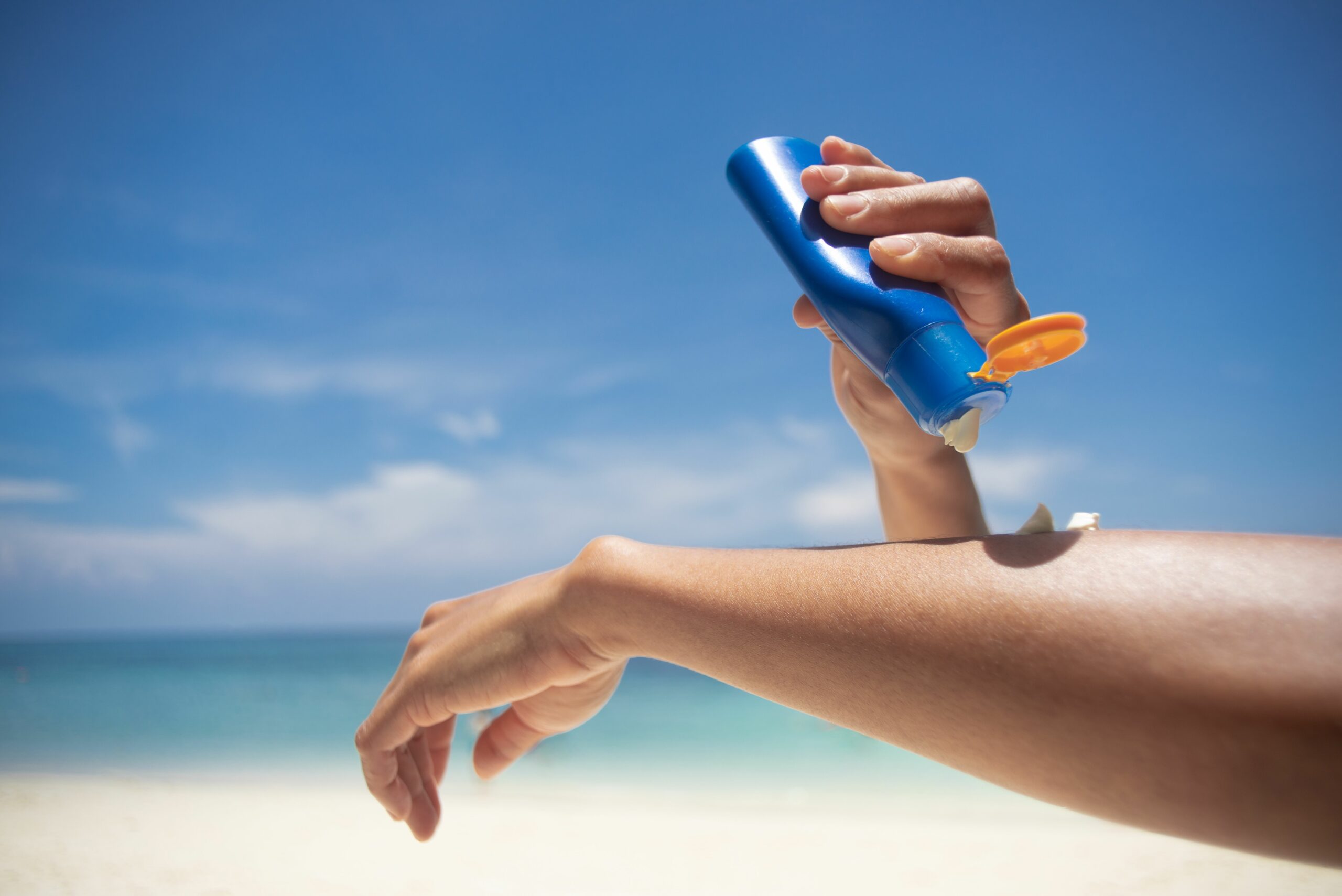From premature ageing to melanoma, the sun’s ultraviolet (UV) rays can damage human skin in all sorts of ways. That’s why it’s so important to apply sunscreen or other sun protection products, particularly in hot, tropical climates like Hong Kong or in major South-East Asian countries. However, those products come with issues of their own: they can irritate skin, and some contribute to environmental degradation such as coral bleaching. Fortunately, Professor Ngai To, Assistant Dean (Research) of the Faculty of Science, Professor in the Department of Chemistry at The Chinese University of Hong Kong (CUHK) and the founder of O-Spheres Limited, has come up with a new technology that can provide sun protection while also being kind to both users and the planet.
A poison to coral reefs
UV filters are the active ingredients that power sunscreens and other Sun Protection Factor (SPF) products. A range of chemicals are currently used to block out the sun’s UV rays: physical blockers like titanium dioxide and zinc oxide, and chemical ones including oxybenzone, which is particularly damaging to the environment.
“To protect us from getting sunburn and to lower the risk of getting skin cancer, chemical and physical filters are the active ingredients in sunscreen that block harmful UV rays,” says Professor Ngai. “Organic-based chemical filters are frequently used in sunscreen because they can absorb UV rays. However, just recently people have become aware of the problems chemical filters can cause. Some of them can trigger skin irritation in people with sensitive skin. They have also been linked to hormone disruption in children and adults. On top of that, chemical sunscreen filters have been found to be toxic to coral reefs” – and as a result, they’ve been banned in certain countries and territories, like Australia, Hawaii and Palau.
“We need to look for sunscreens with 100 percent physical filters, such as titanium dioxide and zinc oxide minerals. Cosmetics companies have been working on this problem for a long time. You need a high concentration, which is expensive and causes difficulties in formulation: the viscosity is very high. The feeling is not good; the texture means it can’t be absorbed, and it can leave white marks on the skin.” Some manufacturers add polymer to prevent this problem, he added, but this results in microplastics ending up in the ocean after washing, swimming or diving, and has been banned by the European Union.
Hollow structure fights UV light
His ingenious new alternative, the O-Spheres Sunblocker, features titanium dioxide combined with a hollow structure, boosting its UV scattering properties, meaning that it’s capable of filtering away between 95% and 98% of UV light.
“One day I was talking to people in a cosmetics company, they told me about this problem and I came up with this idea,” he says. “Our team is already using titanium dioxide and the hollow structure; I thought we should just combine the two. We will be able to develop products with the same level of UV protection, without large amounts of titanium dioxide. That will reduce the cost, and formulation will be easy. It also solves the problem of unwanted marks on the skin, particularly for people with dark skin.” As well as being more sustainable and easier to use, by avoiding the use of chemical filters, the new filters, developed using minerals that are safe for humans, also removes dangers to the individual such as allergic reactions and hormone disruption.


Next up is the process of commercialising the technology. The biggest challenge, Professor Ngai says, is scaling up production to a commercially viable level, something the company is currently working on with a local partner, in a process he estimates will take between one and two years. He aims to commercialise the product by licensing it to sunblock manufacturers and brand owners, some of which the company has already contacted, and they have received positive feedback so far.

Huge potential for industrial applications
The technology also has a number of other potential applications, some of them rather unexpected. In particular, it is already being applied to industrial white ink printing, for instance to print labels on small electrical conduits, where its hollow structure can help prevent clogging of printing machines due to sedimentation caused by the high density of titanium dioxide.
“I was at a conference in Spain and presented an idea on how to make a hollow-structure material,” says Professor Ngai. “A representative of a company that makes ink using titanium dioxide approached me. The problem is that the density is very high; within one or two days, the nozzle gets blocked. He asked if it was possible to help titanium become hollow, reducing the density for better dispersal of ink.”

This technology could also be used in other skincare products, and has potential uses in engineering plastics, where hollow particles could be applied to reduce weight of materials such as those used in car bumpers and interiors, potentially making vehicles lighter and helping to cut carbon emissions.
“O-Spheres’ mission is to engineer hollow microspheres to build a greener globe,” says Professor Ngai. “We aim to solve the environmental challenges and promote sustainability with innovation. We are looking forward to exploring new applications of our technology to promote carbon neutrality and build a better future.”











